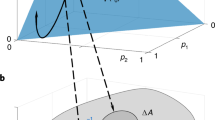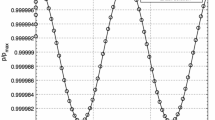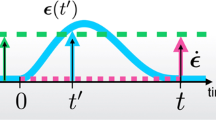Abstract
(1) IN his article under the above heading (NATURE, March 18, 1915, p. 66) Lord Rayleigh deduces, by the method of dimensions, an equation for the rate of heat transfer between a solid body and a stream of fluid in which it is immersed. Commenting on this equation, M. Riabouchinsky (NATURE, July 29, p. 591) remarks that heat, temperature, length, and time are treated in the deduction as independent units; and that if we suppose only three of these units to be “really independent” we obtain a different and less definite result.
This is a preview of subscription content, access via your institution
Access options
Subscribe to this journal
Receive 51 print issues and online access
$199.00 per year
only $3.90 per issue
Buy this article
- Purchase on Springer Link
- Instant access to full article PDF
Prices may be subject to local taxes which are calculated during checkout
Similar content being viewed by others
Author information
Authors and Affiliations
Rights and permissions
About this article
Cite this article
BUCKINGHAM, E. The Principle of Similitude. Nature 96, 396–397 (1915). https://doi.org/10.1038/096396d0
Issue Date:
DOI: https://doi.org/10.1038/096396d0
This article is cited by
-
Experimental investigation into the effects of tamper weight and drop distance on dynamic soil compaction
Acta Geotechnica (2024)
-
Effect of Bucket Geometry, Machine Variables, and Fragmentation Size on Performance of Rubber-Tired Loaders
Mining, Metallurgy & Exploration (2022)
-
Effectiveness of Similitude Theory for Bucket Design and Analysis for Rubber Tire Loaders
Mining, Metallurgy & Exploration (2021)
-
A new blast wave scaling
Shock Waves (2021)
Comments
By submitting a comment you agree to abide by our Terms and Community Guidelines. If you find something abusive or that does not comply with our terms or guidelines please flag it as inappropriate.



